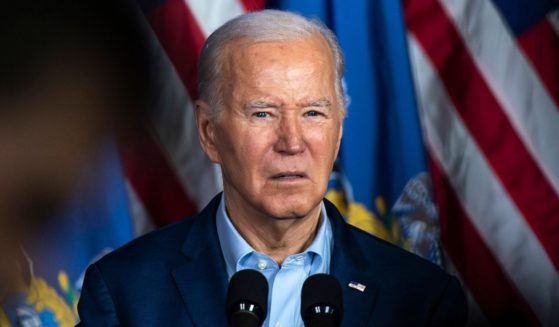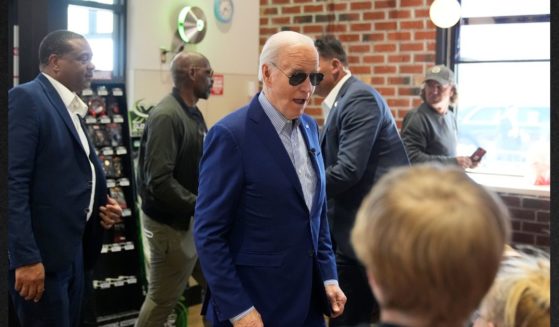Election Data Tells Dem Horror Story: Rural Voters Reject Party's Radical Left Turn
Democrats once dominated Koochiching County in the blue-collar Iron Range of northern Minnesota. But in this month’s presidential election, President Donald Trump won it with 60 percent of the vote.
That’s not because voters there are suddenly shifting to the right, according to Tom Bakk, who represents the area in the state Senate.
It’s because, he said, Democrats have steadily moved too far to the left for many rural voters.
“We’ve got to see if we can get the Democratic Party to moderate and accept the fact that rural Minnesota is not getting more conservative,” said Bakk, who announced last week that he would become an independent after serving 25 years as a Democrat.
“It’s that you guys are leaving them behind.”
While Democrats powered through cities and suburbs in the presidential race, the party slid further behind in huge rural swaths of northern battlegrounds.
The party lost House seats in the Midwest, and Democratic challengers in Iowa, Kansas, Montana and North Carolina Senate races, all once viewed as serious threats to Republican incumbents, fell — some of them hard.
Though Democrats’ rural woes are nothing new, they now heap pressure on the party to begin reversing the trend. Failure to do so endangers goals such as winning a Senate majority, especially with GOP seats in Iowa, Ohio, Pennsylvania and Wisconsin up in 2022.
“The pressure for Democrats has to be on conveying an economic message for rural America,” Iowa Democrat John Norris, a former candidate for governor, said. “We have a great one to convey, but we haven’t put enough emphasis on it.”
Trump lost Wisconsin, Michigan and Pennsylvania after winning all three in 2016. But he won at least 60 percent of the vote in 126 counties there — 14 more than in 2016, according to Associated Press and state elections data. All of those counties are lightly populated.
Perhaps more telling: Trump increased his winning percentages in 90 percent of the counties where he reached the 60 percent mark in those three states four years ago. That includes all 24 counties where he won at least 70 percent of the vote last time, even while Biden was vastly outspending Trump on advertising.
The rural runaway was even greater in Iowa and Ohio, where polls late in October gave Biden’s campaign hopes of a close race or narrow win, only to see him lose them by the same margins that Clinton did.
Trump’s dominance in rural Ohio surprised even Republican strategists.
In Ohio’s 6th Congressional District, 18 counties that hug the Pennsylvania border and Ohio River, Trump improved from 64 percent of the vote to more than 66 percent.
“I’ll be the first to say I was doubtful President Trump could exceed what he did in 2016,” Ryan Steubenrauch, a senior adviser to Republican 6th District Rep. Bill Johnson, said.
Though Biden fulfilled Democrats’ long-sought goal of carrying Georgia and Arizona, albeit narrowly, it wasn’t because he concentrated on reaching beyond their metro hubs, according to Steve Jarding, a veteran Democratic strategist.
“Democrats have found a way to win in the country … by not concentrating much in big parts of the middle of the country,” he said. “That’s a scary proposition.”
Jarding worries that by winning Arizona, Georgia and the northern swing states without addressing the rural economy, Democrats might believe the states are now trending their way.
“We didn’t win Georgia because we had a great message to rural Georgians,” said Jarding, who helped Mark Warner win the Virginia governorship in 2001 by advising him to campaign aggressively far from the booming Washington, D.C., suburbs.
“If Democrats say, look, we got into Georgia and we won it without having to talk about rural issues, they are dead wrong. It will flip back.”
In clinging to their majority, House Democrats lost rural seats, notably the one held for 30 years by Rep. Collin Peterson in western Minnesota.
The setbacks prompted accusations from moderates that the party’s prominent liberals, such as New York Rep. Alexandria Ocasio Cortez, had become representative of a party unpalatable to America’s farming and small manufacturing towns.
“I would argue everyone talks about the big tent. It’s not as big as it used to be,” Minnesota’s Bakk said.
Biden campaigned little in person, even less in rural areas.
Trump, on the other hand, whipped up enthusiasm at rallies in places like Wausau, Wisconsin, in the state’s rural north where he dominated, as well as Saginaw in central Michigan and Johnstown, Pennsylvania, surrounded by counties he carried by more than 70 percent, even 80 percent.
Democrats also spent little time and money combating Trump’s criticisms.
Trump’s claims that Biden and other Democrats are proponents of socialism and defunding police departments resonated in small towns, according to VoteCast, an Associated Press survey of the American electorate.
“We obviously have a brand problem in rural America,” former North Dakota Sen. Heidi Heitkamp, a Democrat defeated in 2018, said. “But if you want to be an alternative, you can’t go there empty-handed.”
The Western Journal has reviewed this Associated Press story and may have altered it prior to publication to ensure that it meets our editorial standards.
Truth and Accuracy
We are committed to truth and accuracy in all of our journalism. Read our editorial standards.












